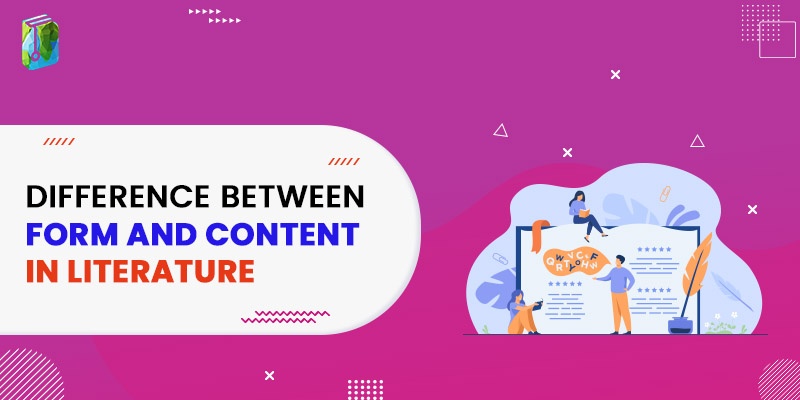In simple words, content is all the text available whereas, form is a way to arrange the content.
In literature, both form and content are vital components of text. They are interdependent on each other and cannot be seen as separate units.
At present, the world is heavily dependent on grasping knowledge on different topics online. Therefore, websites are meticulously working on their content and related components. Both form and content form the structure of a literary work.
Difference between Form and Content In Literature
To understand these terms in detail, let’s get started!
Form – Meaning
Using form is a method to arrange the content of any text. It shows the way by which a piece of text provides information to the reader. The form generally indicates the structure, style, or tone of a text.
There are various sub-forms of forms. Such as there are different forms of a poem like epic, narrative, ballad, etc. Furthermore, when a novel is divided into chapters or the movie is divided into scenes, they are also referred to as form in literature.
Now, let us understand the concept of content in literature.
Content – Meaning
Content is generally what the text wants to deliver to the reader. It describes the information that the text is trying to present. When we talk about literature the content means story, message, theme, or characters.
For more clarity, here are some examples:
- In case of a novel, its plot, theme, or characters are referred to as the content
- In the case of a poem, content means the ideas described in it. Such as, verse, sonnet, haiku, etc
In a nutshell, form and content depend on each other and are an integral part of a text. The text sounds complete and well structured with both form and content.
The Basic Difference in between Form and Content
Form and Structure
Form in literature pertains to the structural elements and stylistic choices made by the author.
It encompasses aspects like language use, literary devices, and overall organization.
The chosen form contributes to the aesthetic appeal and dictates how readers engage with the text.
Content and Substance
Content refers to the subject matter, themes, and ideas conveyed within a literary work.
It serves as the intellectual and emotional core, providing depth and meaning to the narrative.
The exploration of human experiences, emotions, and societal issues is encapsulated in the content.
Interconnected Relationship
Form and content are intricately connected, influencing and shaping each other within a literary piece.
The choice of form can either enhance or obscure the intended content, impacting the overall reading experience.
Content often guides the author in selecting the most suitable form for effective communication.
Form as an Amplifier
Well-chosen forms can amplify the impact of content, emphasizing the beauty or intensity of the subject matter.
For instance, the use of rhyme and meter in poetry or vivid descriptions in prose can enhance emotional resonance.
The aesthetic qualities of the form contribute to the overall artistic expression of the work.
Dynamic Interaction
The relationship between form and content is dynamic and reciprocal.
Content influences the choice of form, guiding authors to select structures that best convey their intended message.
Readers, in turn, experience and interpret the content through the lens of the chosen form, shaping their understanding and engagement with the literary work.
Conclusion
| Form | Content |
| It simply means the arrangement of content in a particular way. | It refers to the information of a text. |
| Defines the structure of information | Defines the information of the text. |
| Shows the structure, style, and tone of the text. | Shows the characters, plot, setting, or theme of the text. |
As it is evident in the information provided above, that form and content are integral parts of a text.
We hope that article helps you to understand the difference between the two and gain clarity.
Keep learning!

